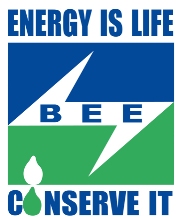The Bureau of Energy Efficiency (BEE) has introduced a new star rating methodology called Indian Seasonal Energy Efficiency Ratio (ISEER) for air conditioners. This evolved rating methodology factors in variance in higher temperature in India and rates air conditioners accordingly. Consumers can now purchase air conditioners with higher efficiency leading to lower electricity bills. Consumers can now purchase air conditioners with higher efficiency leading to lower electricity bills.
Keeping the performance of air conditioners during higher temperature in mind, ISEER will address the different climatic zones in India and higher temperature. ISEER measures energy efficiency of air conditioners based on a weighted average of the performance at outside temperatures between 24 and 43 degree C based on Indian weather data.
As per Indian Weather Data Handbook, 2014, weather profile of 54 major cities shows that 65% of the total number of hours in a year have a temperature above 24 deg C (5778 hours out of 8760). Air conditioners in India have hitherto been tested under the IS 1391 at a standard operating conditions of outside temperature of 35 degree C. Star rating is given to manufacturers based on the test results provided by them as tested on the above standard.
Talking about ISEER, Shri Sanjay Seth, Secretary, Bureau of Energy Efficiency said that the new methodology for rating system will bring in higher energy efficiency of appliances and reduce energy consumption. He further said that the standards have been developed while keeping changing Indian temperature in mind. Such innovations will help us achieve the objective sooner.”
Ratings based on ISEER have been introduced on a voluntary basis for Variable Speed (Inverter) Air Conditioners since June 2015 and proposed to be merged with fixed speed air conditioners in the mandatory regime from January 2018. Some of the leading manufacturers have already adopted the rating for inverter air conditioners.
BACKGROUND
BEE has from the beginning worked out a plan of progressively improving the efficiency of Room AC from 2008 and to transform market towards better energy efficiency standards, BEE continuously tightens the standards such that, the Star-5 in 2010 became Star-3 in 2015 and will become Star-1 in 2018 as per new ISEER methodology. The weighted average Energy Efficiency Ratio (EER) of AC has increased from 2.6 in 2006 to 3.26 in 2015, which is an increase of 25% in efficiency due to tightening of standards.
Since 2010 Bureau of Energy Efficiency has mandated air conditioners as a mandatory-labelled appliance under Energy Conservation Act and since then air conditioners cannot be sold without star label. Now as per latest notification, from January 2016, Star-2 is the least efficiency level to be sold in the market, hence variation in power consumption is compared between Star-5 (most efficient) and Star-2 (least efficient) air conditioners.





